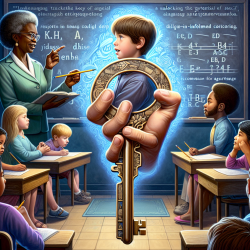Introduction
Understanding humor development in early childhood is crucial for educators, therapists, and parents aiming to foster a supportive environment for children's cognitive and social growth. The Early Humor Survey (EHS) provides a comprehensive tool to measure humor development in children aged 1 to 47 months. This blog explores the findings of the EHS and how they can be applied to enhance early childhood education and therapy practices.
The Early Humor Survey: An Overview
The EHS, developed through extensive research involving over 800 participants, offers a reliable parent-report measure of humor development. The survey identifies various humor types that emerge at different ages, providing a developmental trajectory of humor in early childhood. The EHS categorizes humor into physical, representational, and social rule-based humor, each emerging at different stages of a child's development.
Key Findings and Implications
- Age-Related Humor Development: The EHS findings indicate that humor appreciation and production increase with age. Younger children tend to enjoy physical humor such as tickling and peekaboo, while older toddlers begin to understand and create representational humor, including jokes and mislabeling.
- Cross-Demographic Reliability: The EHS is consistent across different countries and educational backgrounds, making it a versatile tool for international research and application.
- Inter-Observer Reliability: The survey demonstrates excellent reliability between different observers, ensuring consistent results when used by various caregivers or educators.
Application in Educational and Therapeutic Settings
For practitioners, the EHS offers a framework to tailor educational and therapeutic interventions according to the humor developmental stage of children. By understanding the types of humor a child appreciates, educators can design age-appropriate activities that engage and stimulate cognitive and social skills. Similarly, therapists can use humor to build rapport and create a positive therapeutic environment.
Encouraging Further Research
While the EHS provides a robust measure of early humor development, there is room for further exploration. Researchers are encouraged to expand on the EHS findings to explore the relationship between humor and other developmental areas such as language acquisition, social skills, and emotional regulation. Such research could lead to more targeted interventions and a deeper understanding of the role of humor in early childhood development.
Conclusion
The Early Humor Survey offers valuable insights into the developmental trajectory of humor in early childhood. By integrating these findings into educational and therapeutic practices, practitioners can enhance their approach to fostering children's cognitive and social growth. For those interested in delving deeper into the research, the original study provides a comprehensive analysis of humor development in young children.
To read the original research paper, please follow this link: The Early Humor Survey (EHS): A reliable parent-report measure of humor development for 1- to 47-month-olds.










